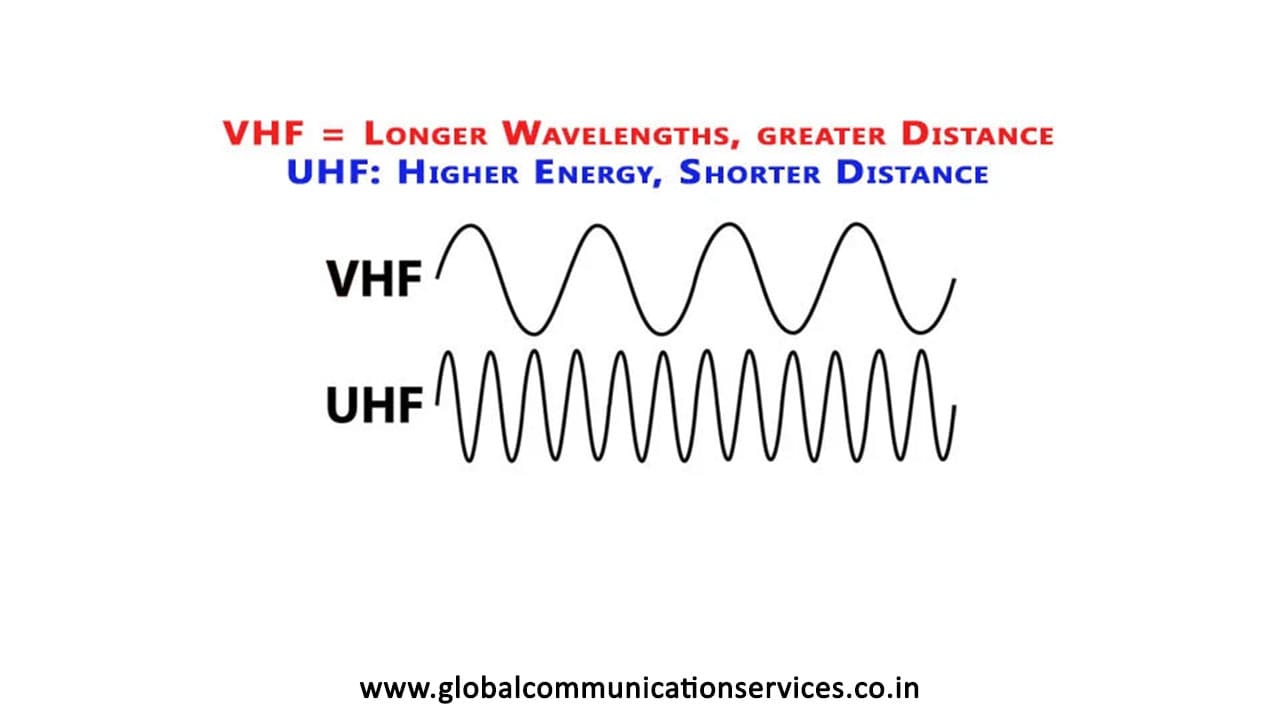UHF VS VHF
In wireless communication, the clash between UHF (Ultra High Frequency) and VHF (Very High Frequency) has been on since always. These two frequency bands have a vital role in diverse industries, from TV and radio broadcasting to public safety. Knowing the UHF vs VHF better can aid us in making learned decisions about which frequency band to use. Here, we’ll dig into the features of UHF and VHF, exploring their advantages, disadvantages, and applications.
1. UHF vs VHF: A Frequency Face-off
At the core of the UHF vs VHF debate lies the difference in frequency ranges. UHF operates within the 300 MHz to 3 GHz range, while VHF covers the 30 MHz to 300 MHz range. This fundamental disparity gives rise to unique characteristics and behaviors for each frequency band.
2. Signal Penetration and Coverage
One of the most significant differentiators between UHF and VHF is their signal penetration and coverage capabilities. UHF signals have a shorter wavelength, allowing them to penetrate obstacles like buildings and foliage with greater ease. This makes UHF perfect for urban environments where line-of-sight communication is often blocked. On the other hand, VHF signals, with their longer wavelength, can journey farther over open spaces. This makes them appropriate for rural areas and long-range communication.
3. Applications of UHF
UHF frequencies find extensive use in various industries. One prominent application is in television broadcasting. UHF television channels offer elevated resolution and enhanced signal quality compared to VHF channels, making them an admired alternative. Additionally, UHF is a favored choice for mobile communication systems such as cell phones and two-way radios. Its ability to penetrate urban structures ensures reliable communication in crowded cities and indoor environments.
4. Applications of VHF
VHF frequencies, owing to their longer wavelengths, are widely employed in applications where extended coverage is essential. One notable example is aviation communication. Aircraft communication often rely on VHF frequencies to ensure clear and consistent communication between air traffic control and pilots. Maritime communication also benefits from VHF, enabling ships to communicate over long distances at sea.
5. Interference and Noise
In the UHF vs VHF debate, interference and noise play a significant role. UHF signals are more susceptible to interference in urban settings due to their higher frequency range. This interference can come from various sources, including electronic devices and other communication systems. VHF signals, with their lower frequency range, are relatively less prone to such interference. This makes them more suitable for critical communication scenarios where reliability is paramount.
6. Equipment Size and Antenna Considerations
The choice between UHF and VHF also impacts the size of equipment and antennas. UHF antennas tend to be smaller because of the shorter wavelength, making them easier to install in confined spaces. VHF antennas, with their larger size, are better suited for outdoor installations and environments with ample space.
7. Regulatory and Licensing Factors
Navigating the waters of UHF vs VHF communication also involves understanding regulatory and licensing considerations. Different frequency bands are subject to varying regulations in different regions. Before deploying any communication system, it’s crucial to be aware of the licensing requirements governing the chosen frequency band.
8. Future Trends and Advancements
As technology evolves, so does the UHF vs VHF debate. Advancements in communication technology are leading to innovations that mitigate the limitations of each frequency band. Like, the use of repeaters and signal boosters is helping extend the coverage of both UHF and VHF systems. Furthermore, the growing demand for wireless communication is driving research into optimizing signal quality and reducing interference.
9. Making the Right Choice
Choosing between UHF and VHF boils down to understanding the unique characteristics of each frequency band. Whether it’s seamless urban communication, broad coverage in rural areas, or reliable long-distance transmission. The decision should be based on the specific requirements of your application.
10. Conclusion
In the current UHF vs VHF contest, there is no apparent champ. Both frequency bands have their own positives and negatives, making them appropriate for diverse scenarios. UHF excels in urban environments where signal penetration is crucial, while VHF shines in applications requiring extensive coverage. As technology progresses, we can hope to see more innovations that improve the capabilities of both UHF and VHF. Eventually, the selection between UHF and VHF should be educated by a careful understanding of each frequency band.


Leave a Reply